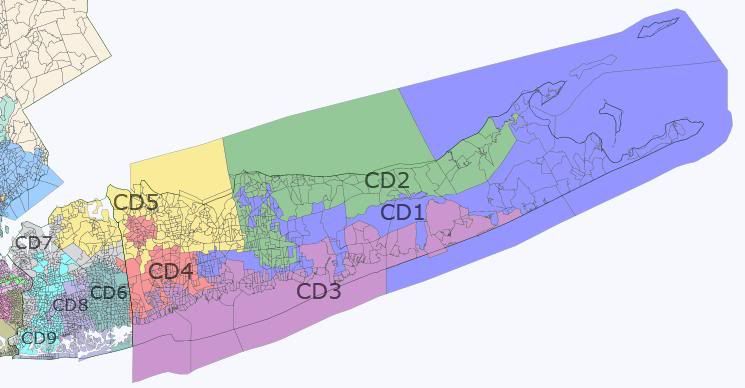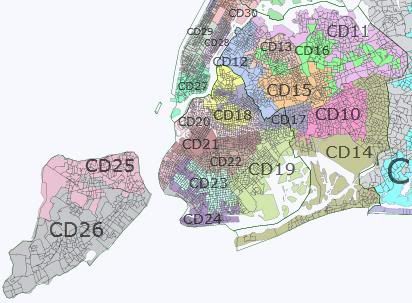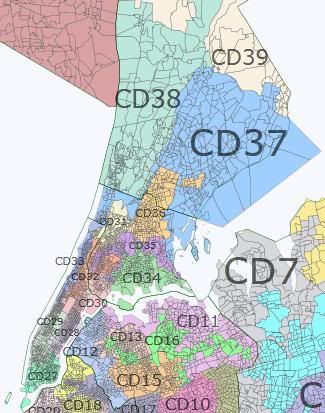• CT-Sen: Murphmentum! Rep. Chris Murphy, in the race to replace Joe Lieberman, seems to have a sizable early edge in both the primary and general elections, at least according to his internal poll from the Gotham Research Group (with a Jan. 3-5 sample period, so pre-Murphy’s campaign launch and pre-Lieberman’s retirement). In the primary, he leads a two-way race against Susan Bysiewicz, 40-31. In the general, he leads Linda McMahon 54-35 and leads Rob Simmons 46-34 (which is quite the testament to McMahon’s toxicity). The spread on the primary numbers is close to the 47-35 mystery poll that was widely mentioned on Murphy’s announcement day, although the Murphy campaign reiterates that that poll wasn’t theirs.
• MN-Sen: Norm Coleman (currently heading American Action Network, who were big players on the dark money front in 2010) is saying that he’s not ruling out another run for office, although couching that by saying he’s enjoying being out of the news on a regular basis. No indication what he wants to run for, though.
• MO-Sen: Here’s one more name to add to the list for Missouri… or to add back to the list, after briefly being off the list while the pursued the chairmanship of the RNC. Ann Wagner, a former ambassador to Luxembourg, former RNC vice-chair, and former campaign manager to Roy Blunt (can’t get much more GOP establishment than that resume), is publicly weighing the race again. (She says she’d defer to Jim Talent, though, but that’s looking less likely.) And here’s an early endorsement for Ed Martin, the former MO-03 candidate who’s emerging as something of the tea party favorite in the field, if he decides to run; he got the endorsement of Phyllis Schlafly, Missouri-based 80s right-wing icon who still has a lot of pull in social conservative circles.
• OH-Sen: Rep. Jim Jordan is back in the news for saying that he’s “leaning against” a run against Sherrod Brown. If I recall correctly, he’s been “leaning against” the race for months, so things don’t seem to have changed much here.
• LA-Gov: Louisiana Democrats seem to be turning their attention toward something that’s previously eluded them: a potentially willing candidate to go up against Bobby Jindal. Former SoS Al Ater, well-regarded for getting the state electoral system back in gear after Hurricane Katrina in 2005, still sounds pretty noncommittal, perhaps most about the idea of spending his own money on the race (self-financing seems to be the Dems’ main criteria for the race, and while Ater has money, he doesn’t sound happy about spending much of it).
• IA-03: Christie Vilsack is seemingly moving toward a run for the House in 2012, meeting with donors and labor leaders to lay some groundwork. This seems strange, though, because all three of the state’s House Dems say they’re running for re-election, including 77-year-old Leonard Boswell. (Vilsack would be likeliest to run in the 3rd, or whatever the Des Moines-area district will be called once redistricting happens.) She won’t make a formal decision until April, when the new four-district redistricting maps will be unveiled, but for now it looks like, unless she’s going to run against Steve King, there’s a collision course with an existing Dem.
• Chicago mayor: Fresh off a surprising setback in the Illinois Appellate Court, which reversed lower court rulings that he was a Chicago resident and eligible to become mayor, Rahm Emanuel has appealed to the state Supreme Court; they’ve announced they’ll hear the case on an expedited basis, with no oral arguments, so we should be out of limbo pretty soon. There was a brief period where it looked like the city was going to go ahead and start printing ballots without Emanuel’s name (which would basically be the kiss of death), but also today, a stay was ordered that pushes back the ballot printing until the case is fully decided. Also, in case you though this was all just about a legitimate case of differences in statutory interpretation, with grownups disagreeing about what an inadequately-specific law means, guess again. (Forget it, Jake. It’s Chicago.) It turns out that two of the three Appellate Court judges on the case were slated by the 14th district Alderman Edward Burke, a local powerbroker who’s a staunch Emanuel rival and a key Gery Chico backer. This leads to the question of whether supreme court justice Anne Burke, who may have a certain loyalty to Edward seeing as how she’s married to him, will recuse herself from the Emanuel case.
• Omaha mayor: There’s one special election on tap today: a recall election in Omaha, against mayor Jim Suttle. There’s no scandal or malfeasance alleged, just anger about over usual teabagger grievances like “excessive taxes, broken promises, and union deals,” as well as the unspoken obvious: while it’s an ostensibly nonpartisan job, Suttle’s a Democrat. (Omaha seems particularly trigger-happy about recalls; Mike Boyle was successfully recalled in 1987.)
• Senate: Somehow it doesn’t seem unusual, but what George Allen is attempting (and what Jim Talent could attempt, too) is, in fact, highly unusual. Only five Senators have lost re-election and then come back to the Senate… but most of them (Slade Gorton most recently) were elected to their state’s other Senate seat. What Allen is doing is even more unusual: defeating the guy who beat you six years ago in order to reclaim your seat seems to have happened all of once in history. Thanks to UMN’s Smart Politics, it looks like the one time was in 1934, when Rhode Island Democrat Peter Gerry (the great-grandson of Elbridge Gerry, in case you’re wondering) beat one-term Republican Felix Hebert, who had knocked him out in the GOP tsunami of 1928.
• DGA: The Democratic Governor’s Association announced its new hires for the cycle, including the Patriot Majority’s Dan Sena as its political director. We’re especially happy to see their new hire for communication director: friend-to-the-site Lis Smith, last seen on Ted Strickland’s campaign.
• Redistricting: There’s some redistricting-related drama looming in New York, where the Senate Republicans are backing away from promises of a non-partisan redistricting map. Andrew Cuomo has signaled that he’d veto any map that wasn’t non-partisan, but is now suggesting he can negotiate on that, in exchange for other priorities. There was also a smaller battle in Georgia, won by Lt. Gov. Casey Cagle (who, in his role as Senate president, got to reassert his authority over the process), where the stakes are lower since the GOP controls the trifecta. The battle was against Senate president pro tem Tommie Williams… Williams is from the south (unlike Nathan Deal, Cagle, and the House speaker, all from the north) and has a stake in keeping the underpopulated southern part of the state’s interests represented at the table.
One of the big question marks for redistricting is Florida, where the initiative that passed, limiting gerrymandering, still has to run the gauntlet in the courts; the GOP in the state House are joining the suit against the initiative that was filed jointly by Mario Diaz-Balart and Corrine Brown (not surprising that they’d support it, since the GOP controls the trifecta and the legislature would get to resume gerrymandering if it’s struck down). Finally, the Pittsburgh Post-Gazette takes a look at Pennsylvania redistricting prospects, concluding (rightly, in my estimation) that the axe is likely to fall in the southwest corner of the state because of its stagnant population, and suggesting that the likeliest removal from the House will be the loser of a Jason Altmire/Mark Critz mashup.




























